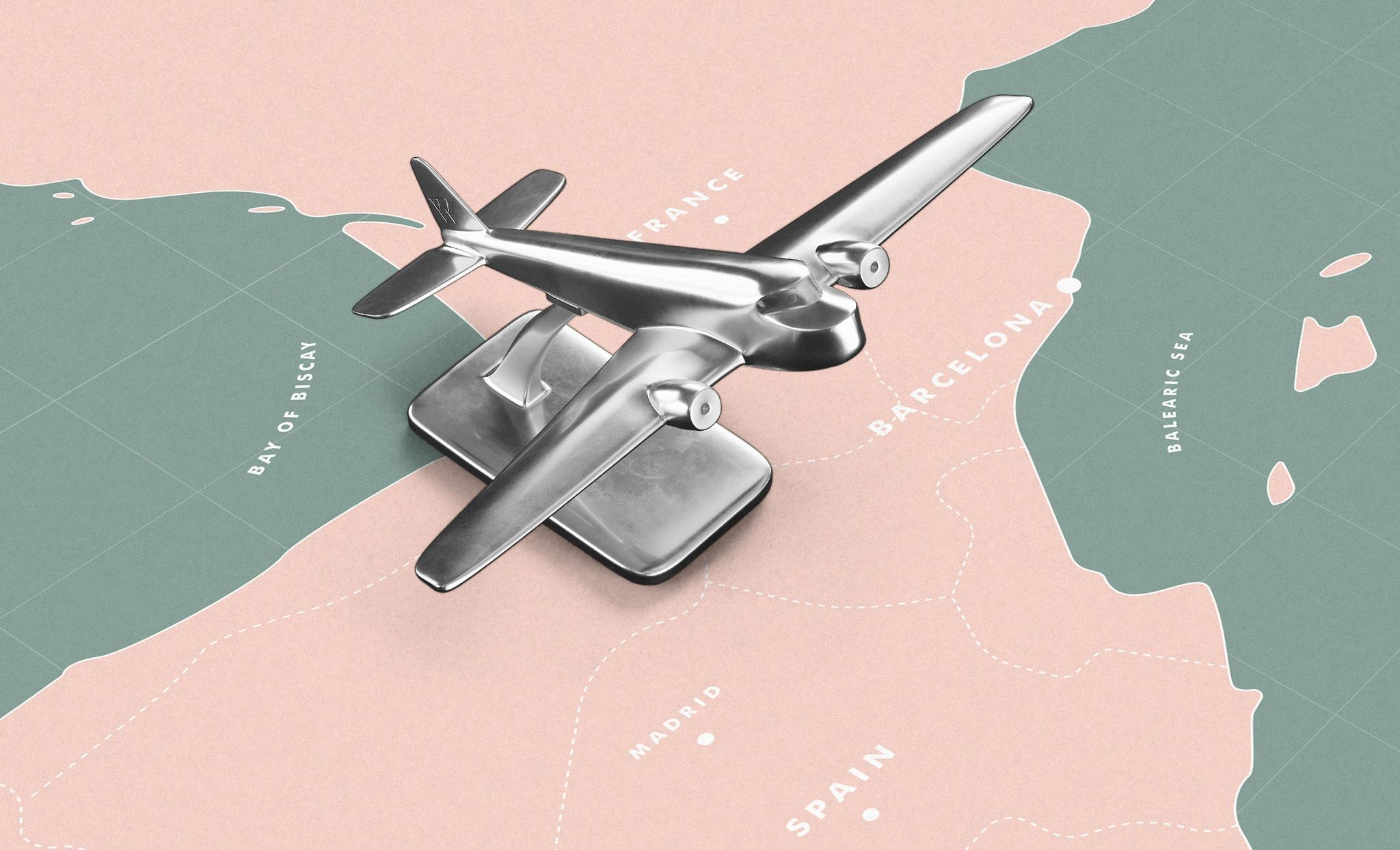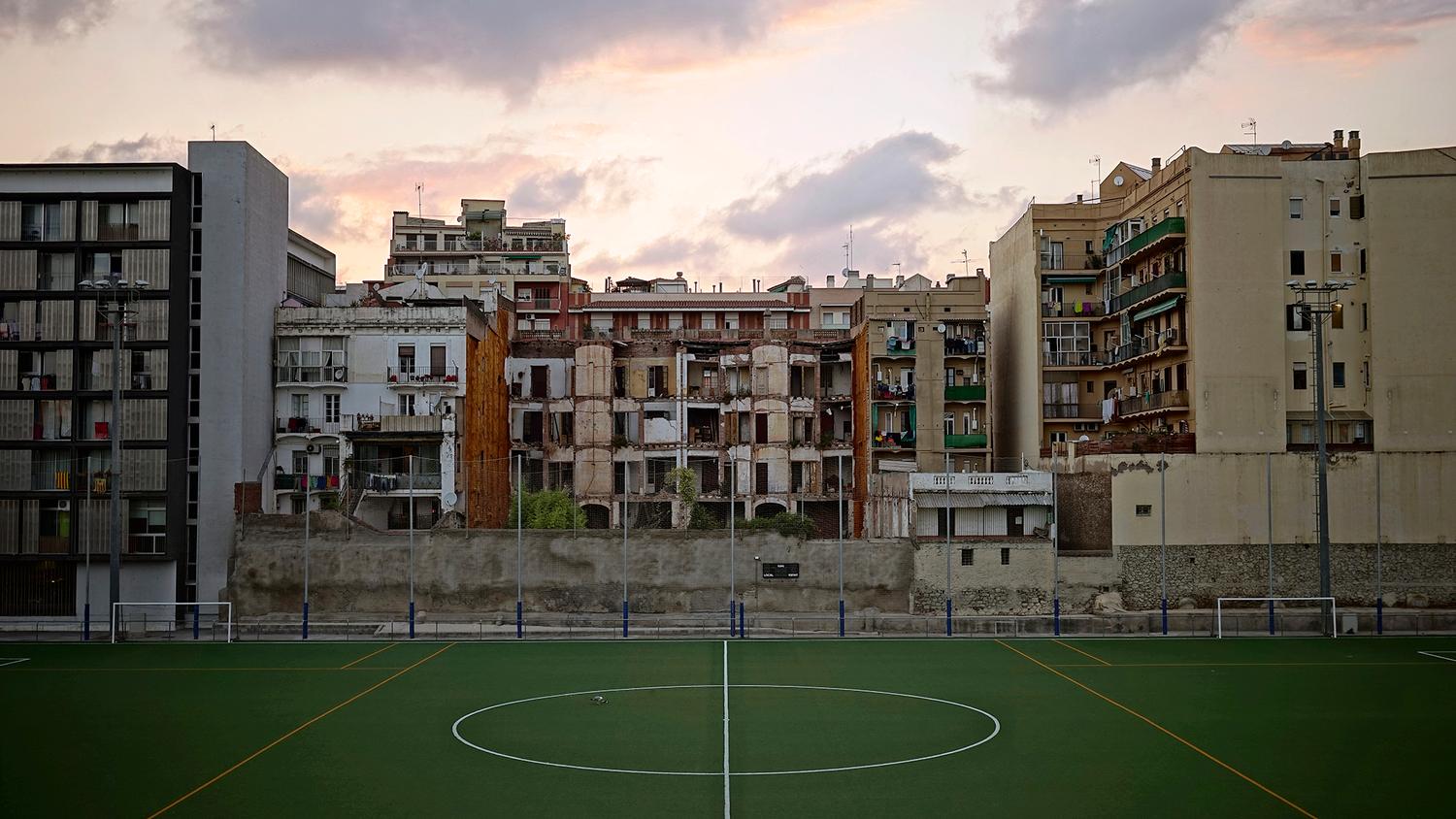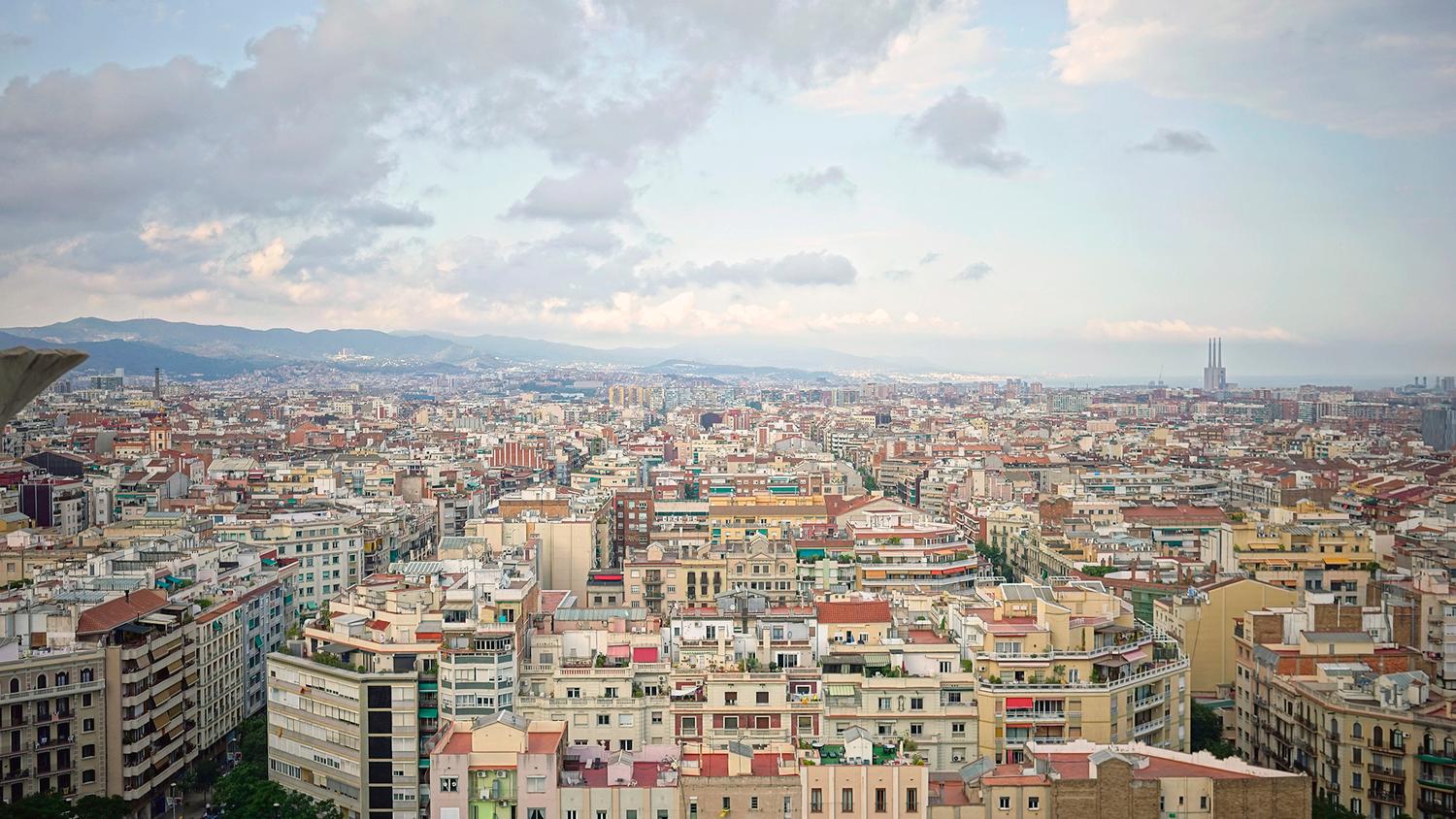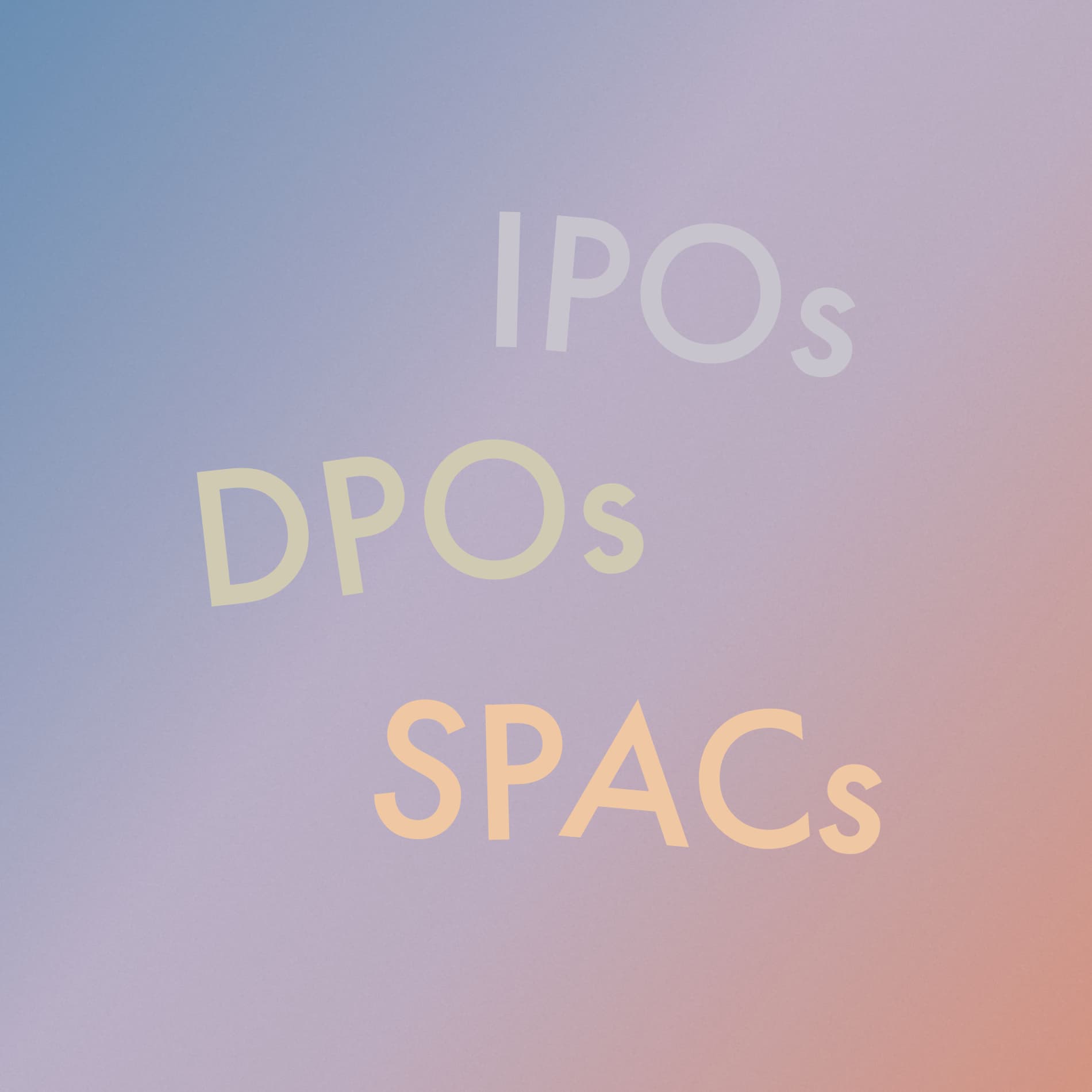
Finance for Humans
How to Take a Year Off in Barcelona for $18,000 USD (Or Less!)
You've always wanted to do it. But never actually considered how it might happen. A practical, and financial, guide to getting realistic about the fantasy of a year away.
Wealthsimple makes powerful financial tools to help you grow and manage your money. Learn more
The sabbatical.
The year-off.
The walkabout.
The career/life reset. It's something most of us talk about, or at least dream about. It's the answer to the questions we ask ourselves before our pick-me-up 4:15 p.m. coffees: Will life be a march of unremitting, interminable years of work? Will each year be an unremitting march of 50 weeks of the office punctuated by two weeks of a place you love? Will those two weeks be an unremitting march of days spent in a straw hat that you feel expresses your true self punctuated by saying “What if we just lived here?”
If you have the dream to take a year off — a gap year! — you may find yourself asking an important question. Namely: how do I do it? Followed by another question: where? Well we're here to answer both of those questions. The second one first: Barcelona.
Why Barcelona? Well, the weather: Barcelona has an average of 310 sunny days a year. And the culture — music, art, the Gaudi houses and his Sagrada Familia minor basilica. And the nearby sea, the greatest soccer team in the world (arguably, Real Madrid fans. Arguably!). And the food. The food, the food, the food. We can't get into the food in this space because Barcelona trembles under the weight of it's own great foodness the way the market stalls of La Boqueria tremble under the weight of olives and pickled artichokes and ham ham ham ham.

Sign up for our weekly non-boring newsletter about money, markets, and more.
By providing your email, you are consenting to receive communications from Wealthsimple Media Inc. Visit our Privacy Policy for more info, or contact us at privacy@wealthsimple.com or 80 Spadina Ave., Toronto, ON.
Also, it's remarkably affordable.
While Barcelona might be one of the more expensive cities in Spain, it's still a breath of fresh air compared to the cultural capitals of North America. If you play your cards right, it’s absolutely possible to live quite comfortably in Barcelona for around €1,000 (~$1,506 CAD) a month. So here’s how to finesse it:

Step One: Make a Financial Plan
Every person who’s made the leap has pretty much the same advice: save, save, save before you go. That includes our own Creative Director who provided the photos below, all of which were taken in his year off traveling. The cost of your year off will greatly depend on whether you’re doing this with the blessing (aka financial support) of your current job, or whether you’re taking unpaid leave. Let's assume you’re going to be taking unpaid leave (or a gap year, or making a career change, or having a super well-planned midlife crisis). You'll need to build up a comfy nest egg to finance your year.
But how much? Some financial planners like Ted Jenkin, founder of oXYGen Financial, Inc., recommend saving about one year of your salary before you go.
But a lot of us don't need to maintain our current income level — because we'd be happy to live a different lifestyle or move to a cheaper place or because we don't want to wait forever to save that kind of money. We still recommend socking away the equivalent of at least a three to four months’ salary. Even if you plan on working in Barcelona, you still have to account for the upfront costs (more on that in a bit) and unforeseen glitches.
How can you put even that much money away? Well, there are ways to trick yourself into saving more. And you can make some adjustments to your lifestyle now — you’ll have plenty of opportunities to drink cocktails at much more forgiving prices once you’re in Barcelona. Then get creative. Can you rent out your apartment while you’re away to give yourself some income? Nora Dunn, a financial planner and founder of the website The Professional Hobo, writes about the importance of asset allocation. She suggests putting travel savings into cash investments, “a high-interest guaranteed savings account that I draw on when needed, or add to if my income exceeds my expenses.” She also recommends putting any proceeds from the sale of your personal assets (real estate, that guitar that’s gathering dust in the basement, etc.) into a conservative or a moderate conservative portfolio — so your money does some work for you. We know of a place that offers excellent version of these with very low fees!
And if you want to reduce the amount you'll have to save in the first place, Borja Bauzá, a local journalist from Barcelona, suggests eliminating your most significant expense: rent. “A lot of people have started doing intercambios de pisos” — flat swaps.” Basically, you find someone in Barcelona who wants to move to New York (or Toronto, or DC, or Montreal, or wherever you are) for a year, and swap apartments with them. Sites such as HomeExchange.com and SabbaticalHomes.com allow you to list your home in exchange for a yearly fee.

Step Two: Get Informed (Preferably With The Help of Someone Who’s Been There)
When it comes to getting tips on mastering your move to Barna, seek out those who’ve gone before you. Someone who’s already made the move is optimal. But if that's not possible, you’ve got the next best thing: the internet. There are an abundance of expat blogs that break down the true cost and effort of moving to Barcelona, and they’re going to be your best friend. Check out Expat in Spain or the Spain section of Expatica, which has detailed information on visas, finding housing, and more.
Step Three: Find Out Exactly How Much $$$ You’re Going to Need. Starting with Housing.
If you haven't found (or don't want) someone to swap places with, it's time to talk about the biggest number in your monthly expenses: rent. How much you pay will depend on lots of things, like whether you’re willing to share a flat and where you want to live. “The average price for a two-bedroom apartment in areas such as Gràcia, Sagrada Familia, and l’Eixample will be about 900 to 1,000 euros,” Bauzá says. Bauzá also advises that reasonable deals can be found in the neighbourhoods such as El Clot and La Sagrera. A one-bedroom in those areas will usually go for €850 or so (~$1,280 CAD).
Recommended for you
But if you’re looking to save money and make friends, shared flats are the way to go. Alex Yamet, an American who’s been living in Barcelona since 2012 and working as an English teacher, says that “there are many many thousands of expats in this city, and most of them live in shared flats.” A room in a shared flat in a good area will cost between €400 to €500 a month (~$600 to $753 CAD).
Both Bauzá and Yamet say the best places to find apartments — shared or not — is Idealista.com.
Note: utilities are usually not included in the rent price, so you’ll be looking at an additional €60 (~$90 CAD) per month, on average, for gas and electricity.
It's good to know how much you plan to spend. But don't try to find a place ahead of time. “Don't make any commitments on housing before you're here,” Bauza says. You want to make sure you like the neighborhood — or don't like a different one more. And you want to make sure the offer isn't bogus. He suggests staying with friends or renting an Airbnb for a couple of weeks to get your bearings. That figure should go into your nest egg calculations. Another cost you may have to pay upfront? One month’s rent upfront and a security deposit. And if you’re going through an agency, you’ll also have to pay a broker’s fee which is typically either one month's rent or 10% of the yearly rent.
Health Insurance
Then there’s the question of health insurance. Spain has a free public health care system, but expats are only eligible for coverage if they are resident in Spain, and have real jobs (or register as self-employed) — and pay social security contributions. Expats who do not meet this criteria opt for private insurers. Yamet recommends Sanitas, which can cost anywhere from €25 to €60 a month, depending on what plan you choose.
Budget for Having Fun and Eating and Drinking (and Drinking, and Drinking…)
Now for the good part. No one moves to Barcelona to stay at home and watch Netflix. “This is a warm city,” Yamet says. “Do people go out all the time? Yeah. Do people like to take little weekend trips and create long weekends by linking a national holiday to a Friday? Yes. People here, especially expats, like to live well.” And this is all possible because when it comes to food and drink, Barcelona is still mercifully cheap. “You go to a good tapas bar — and we're talking about a full belly and multiple drinks — and it doesn't have to cost more than €20 per head,” Yamet says. Bauzá echoes this: “A beer around Gràcia, for example, will cost you about €2.5” . There’s also something called a menu del día — the majority of restaurants will have a lunch prix fixe with appetizer, a main course, a drink (a glass of wine or a beer), dessert, and coffee for around €10 to €12.
Shopping at supermarkets is also inexpensive and always fun for people who still find all the food exotic. At reasonably priced supermarkets such as LIDL and Día, €30 to €40 will set you up for the week, Bauzá says. And street markets are abundant and boast an impressive selection of Spanish fruit and Spanish vegetables and other delicious Spanish things — and they're not expensive.
Getting Around
Another good thing about living in Barcelona? Public transport will get you anywhere you need to go. A monthly T-Mes travel card (valid for all forms of public transport in Barcelona) costs €50, but 10-journey or 50-journey cards are also available. Yamet also recommends checking out Cooltra, where you can easily rent scooters for about €15 a day, if that’s more your thing.

Step Four: Do the math
So here’s what it all (roughly) breaks down to per month:
€400 to €600 for rent, plus €60 for utilities (~$602 to 903 CAD, plus ~$90 CAD)
€25 to €60 for health insurance (~$37-90 CAD)
€50 for transport (~$75 CAD)
€160 to €200 for supermarket purchases (~$240-300 CAD)
€200 to €300 (~$300-450 CAD) for entertainment and nights out. Museum entries usually cost around €10 [~$15 CAD], and a cinema ticket will set you back €9,50, although Wednesdays are día del espectador, where ticket prices are reduced.
And that makes a grant total of about €900 to €1,270 a month, or about €10,800 to €15,240 a year — that would be about $16,250 to $22,935 CAD. Stay away from the touristy areas and live like a local and you'll keep yourself on the low end of the spectrum — plus local friends will take you to the cheap insider spots.
Step Five: Tackle the Legal Nitty-Gritty
Unless you’re an EU citizen, you’re going to need a visa. You can get a regular visitor’s visa that’s valid for 90 days — but after that 90 days you have to wait another 90 days before you can use another visitor’s visa. Another option is a freelance work visa — you can apply for one at the Spanish consulate or embassy in your home country. You'll need to provide evidence that you have the appropriate finances to support yourself while you're there, and contracts or commissions from companies. More information on freelance visas can be found at Expatica.
Another viable option is to enter Spain with a student visa, which is what Yamet did when he completed courses at the Universitat de Barcelona.
Whichever route you go, you'll have to apply for a Foreigner’s Identity Card and number (TIE/NIE) through the local Foreigner’s Office (Oficina de Extranjeros) or Police Station within 30 days or arrival. In order to receive this number, make sure that you have a letter of residency or census registration (empadronamiento), which you can get from the police station if you present them with your passport, rental contract, or utility bill.
Step Six: Enjoy!
Yes, all that legal and financial stuff is a headache. So just remember why you're doing this. How many other cities are there where you can go to the beach on your lunch break, hop on a cheap flight to enjoy a long weekend in Lisbon, spend most of the year eating and drinking outside, and take a day trip into the mountains of Montserrat? “I can hop on a train or into a car and be in some picturesque idyllic beach town or mountain village in a short time,” Yamet says.
So brush up on your Spanish — sign up for some Catalán courses while you’re at it — and start saving..
Wealthsimple's education team is made up of writers and financial experts dedicated to making the world of finance easy to understand and not-at-all boring to read.










